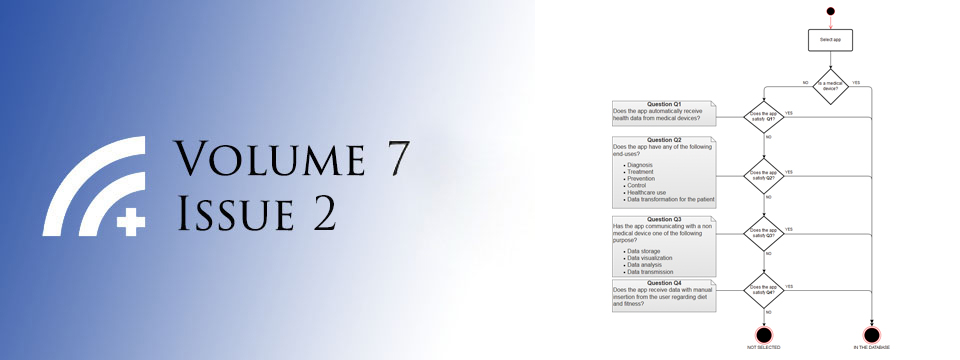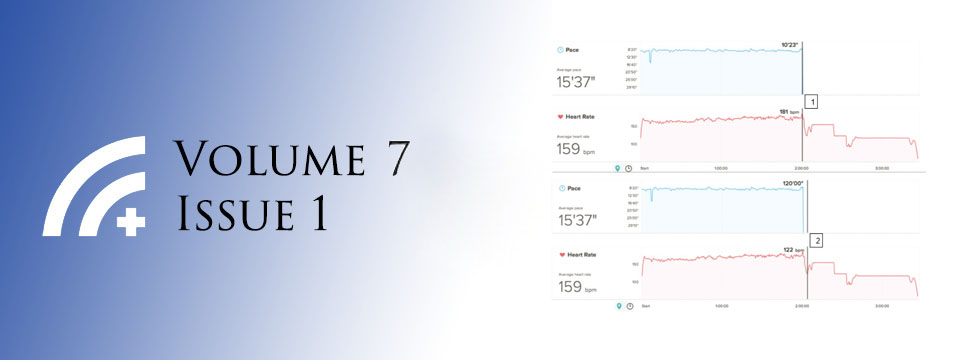Posted on Jun 3, 2014 in Conference |
Susannah M. Allison, PhD1, Jacqueline Lloyd, PhD, MSW2
1Program Officer, Division of AIDS Research, National Institute of Mental Health, NIH; 2Deputy Branch Chief, Prevention Research Branch, National Institute on Drug Abuse
Journal MTM 3:1S:10, 2014
DOI: 10.7309/jmtm.3.1S.8
Abstract
Technology-based HIV research has expanded dramatically over the past decade. Technology allows for greater reach, anonymity, tailoring, dissemination and implementation of interventions and services in diverse contexts and settings. Technology also allows for the efficient collection of data in real time, collection across multiple random timepoints, and collection of social network interaction data. While technology presents opportunities, there also are a number of challenges to address as well as investigate through research (e.g. ethics, data security and confidentiality, costs, keeping ahead of changing technology). The National Institute of Mental Health (NIMH) and the National Institute on Drug Abuse (NIDA) have a history of supporting technology-based HIV research and have continued interest in funding research that integrates and takes advantage of innovative and emerging technologies. Both NIMH and NIDA have a number of current funding opportunity announcements (FOAs) and initiatives to harness the power of technology to prevent HIV, provide HIV care and services, and improve the health outcomes of those living with HIV
Posted on Jun 3, 2014 in Conference |
Kevin Farrell1, Ian W. Holloway2
1Department of Public Affairs, Luskin School of Public Affairs, University of California, Los Angeles; 2Department of Social Welfare, Luskin School of Public Affairs, University of California, Los Angeles
Journal MTM 3:1S:9, 2014
DOI: 10.7309/jmtm.3.1S.7
Abstract
The purpose of the policy panel session was to gather experts in health technology development, HIV service delivery, and law and policy to discuss the benefits and challenges of providing technology-based HIV prevention and care, with a particular focus on health information security and privacy protection. The key discussion questions were: What are the primary concerns of clients regarding privacy and to what extent do clients have control over their private health information? What are the necessary precautions that clients can take to ensure that their health information is kept private? How can technology companies who interact with researchers and healthcare providers improve their privacy protections for clients?
Each panelist provided their unique perspective and experience on the topic. While no final standards (beyond HIPAA) or best practices were explored, the panelists and members of the audience expressed strong concerns about the sharing of protected health information and the overriding importance of helping clients to fully understand their risks when they are providing information through digital means. All agreed that privacy of client records must be paramount whether it involves the development of a mobile-based application that allows people to share their STD results with other dating partners or health-related information that clients take away from an agency (e.g., written referrals, lab results). With the rapid growth of technology and digital data, protection of client information remains an increasing challenge for researchers, healthcare providers, policy-makers, and other technology companies. More attention on consumer education, health and technology literacy, and increased transparency of protection policies is needed.
Posted on Jun 3, 2014 in Conference |
Cathy Reback, PhD1
1Senior Research Scientist, Friends Research Institute, Inc.
Journal MTM 3:1S:8, 2014
DOI: 10.7309/jmtm.3.1S.6
Abstract
Methamphetamine use among MSM is deeply integrated into socio-sexual networks including physical risk venues such as circuit parties, sex clubs, and bathhouses and digital spaces such as cell phone applications, websites, and digital chat rooms to “hook up” for sex. Thus, methamphetamine use is highly associated with HIV infection due specifically to concomitant high-risk sexual behaviors that occur while using the drug. Text-messaging is a feasible and sustainable approach for targeting high-risk, methamphetamine-using MSM; particularly, those who fail to attend face-to-face or site-based interventions. A real-time text-messaging intervention capitalizes on a communication channel to which this population will attend at the exact time they are most likely to make high-risk sexual decisions. In the Stage I (N = 52) open label pilot study there were significant decreases in frequency of methamphetamine use and unprotected sex while on methamphetamine (both p < .01), and a significant increase in self-reported abstinence from methamphetamine use (13.3% vs. 48.9%; p < .001) from baseline to follow-up. Additionally, participants reported reductions of unprotected anal intercourse with HIV-positive partners (p < .01); with HIV-negative partners, participants reported fewer insertive and receptive episodes (both p < .05). The Stage II randomized controlled trial, which will begin enrollment in February 2014, will assess the impact of the theory-based text-messaging intervention on reductions in methamphetamine use and HIV sexual risk behavior and, for the HIV-infected participants, simultaneously increases in HIV antiretroviral treatment/adherence, and determine the cost effectiveness of the text-messaging intervention. Participants will receive text messages that are personally tailored to fit their risk profile. Participants will be randomized into one of three conditions: Group 1: culturally relevant theory-based text messages interactively transmitted by peer health educators; or, Group 2: the same culturally relevant theory-based text messages transmitted by automation; or, Group 3: assessment-only control with no theoretically based text messages.
Posted on Jun 3, 2014 in Conference |
Eric Rice, PhD1
1University of Southern California, School of Social Work
Journal MTM 3:1S:7, 2014
DOI: 10.7309/jmtm.3.1S.5
Abstract
Background Homeless youth are at extreme risk for HIV/AIDS. Their risk taking behaviors have consistently been linked to their engagement with risk-taking peer networks. Modern communication technologies such as social media, cell phones, and email have changed what it means to be homeless. Youth today are not limited to connecting only with other high-risk youth, in person on the streets. Now, technology-using youth are able to connect to pro-social networks comprised of family and friends who are not involved in the high-risk activities of street life.
Methods Results from two different NIMH-funded studies of homeless youth in Los Angeles are presented (social network survey n = 136; survey of technology using patterns n = 201).
Results 83.5% of homeless youth report using the internet at least once per week and 62% of youth own a cell phone. Youth who connect with family via the internet are 3.1 times less likely to report trading sex for food, money, drugs or a place to stay. And youth who connect to family are 2.5 times more likely to report getting tested for HIV in the previous six months. 22% of youth report having a home-based, condom-using peer who they communicate with via internet or phone and having such a peer is associated with a 3.5 times increase in safer sex behavior. Youth who connect with friends from home via the internet are 2.0 times more likely to report recent HIV testing.
Conclusions Modern communication technologies, particularly social media platforms, email and cell phones provide new avenues for interventions with homeless youth. Social media-based and smart phone-based apps which help connect youth to HIV prevention services could reach the vast majority of homeless youth. Moreover, using these platforms to help youth reconnect to home-based peers and family seems a particularly promising route for reducing HIV/AIDS related risk behaviors.
Posted on Jun 3, 2014 in Conference |
Dallas Swendeman, PhD, MPH1
1Assistant Professor, UCLA Department of Psychiatry & Biobehavioral Sciences
Journal MTM 3:1S:5, 2014
DOI: 10.7309/jmtm.3.1S.3
Abstract
The massive proliferation of mobile phones and internet-based technologies are creating opportunities for unprecedented levels of engagement with patients and clients to support their activation toward health and prevention priorities. This presentation will provide an overview of several technology platforms from teams with development support in Los Angeles, with examples of their applications in HIV/AIDS prevention and treatment support. The presentation will focus on responding to the most common questions that service providers and organizations have when considering adoption of technology-based innovations, such as, “What can technologies do realistically?”, “How much will it cost?”, “Is it feasible and acceptable with our clients or patients”; and “How can service organizations and researchers partner to leverage our complementary expertise and goals to fund, design, test, and refine technology support tools.” The presentation will also focus on client/patient feedback on their user experiences rather than statistical evidence of efficacy, which is notably lacking in this field and frequently cited as needing much more research to demonstrate efficacy. Specific technologies and projects presented will include: 1) Interactive Voice Response (IVR) and text-messaging (SMS) for adherence and appointment reminders, and supporting coping and mental health support with people living with HIV (PLH); 2) smartphone application for daily self-monitoring of physical and mental health symptoms, stress, substance use and triggers, sexual behaviors, and adherence, for both self-management and supporting treatment and intervention programs; 3) mobile phone and web applications to support supervisors and frontline field workers for case management, intervention delivery, outcome/evaluation monitoring, and fidelity monitoring and support.
Posted on Jun 3, 2014 in Conference |
Lynn C. Miller, PhD1, John L. Christensen2, Paul Robert Appleby3, Stephen John Read3, Stacy Marsella3, Charisse Corsbie-Massay4, Carlos Godoy3, Mei Si5, Janeane Anderson3, David Jeong3, Mina Park3
1Professor, USC Annenberg School for Communication and Journalism & Department of Psychology; 2University of Connecticut; 3University of Southern California; 4Syracuse University; 5Rensselaer Polytechnic Institute
Journal MTM 3:1S:4, 2014
DOI: 10.7309/jmtm.3.1S.2
Abstract
Young men (18–24) who have sex with men (YMSM) are at high risk for contracting HIV. Most existing HIV prevention interventions focus on changing intervening cognitive and deliberative processes or outcomes (e.g., beliefs, norms, self-efficacy, intentions) to change behavior. Many MSM, however, guided by contextual cues in emotionally arousing scenarios, make more automatic risky decisions they later regret. One emotion in a sexual narrative that might precipitate more automatic risky choices for young MSM may be shame (e.g., in one’s sexual desires). But, HIV prevention interventions are not designed to reduce MSM’s shame. SOLVE (Socially Optimized Learning in Virtual Environments), as demonstrated by an NIAID-funded randomized control trial, used a sex-positive game to reduce MSM’s shame, increase traditional immediate cognitive outcomes, and reduce unprotected anal intercourse for young Black, Latino, and White MSM (18–24) over 3 months. Could interactive interventions be delivered more broadly over the web? In prior CHRP funded work, a SOLVE interactive video (IAV) intervention was streamed over the web throughout California. However, an IAV approach limits the amount of user interaction, risk challenges users receive, and intervention tailoring to MSM’s decisions. This is addressed using a nationally deliverable 3D animated intelligent agents/interactive digital storytelling game in UNITY. MSM design their own characters, make choices for them on dates and sexual interactions, and are scaffolded by the user character’s virtual future self (participant’s older chosen self-character) to enhance self-regulation when risky. The NIMH-funded SOLVE-IT game development process for young MSM is discussed. Preliminary results from a 6-month randomized controlled trial conducted nationally, over the web, are promising.
*A similar abstract was published in a previous version of your journal.







